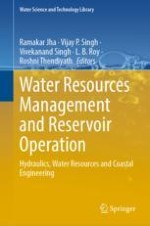This book explores many recent techniques including ANN, fuzzy logic, hydraulic models and IWRM utilized for integrated water resources management, a real challenge in India for obtaining high irrigation efficiency.
The book deals with topics of current interest, such as climate change, floods, drought, and hydrological extremes. The impact of climate change on water resources is drawing worldwide attention these days; for water resources, many countries are already stressed and climate change along with burgeoning population, rising standard of living, and increasing demand are adding to the stress. Further, river basins are becoming less resilient to climatic vagaries. Fundamental to addressing these issues is hydrological modelling which is covered in this book Further, integrated water resources management is vital to ensure water and food security. Integral to the management is groundwater and solute transport. The book encompasses tools that will be useful to mitigate the adverse consequences of natural disasters.
